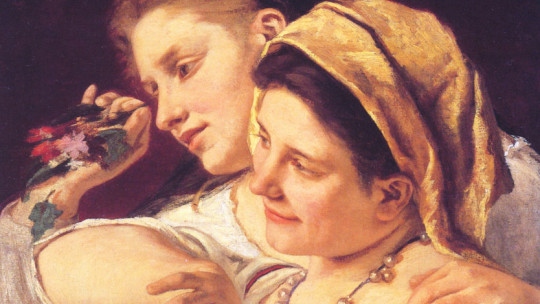Traditionally, it has been considered that a woman’s libido level is lower than that of a man History teaches how throughout the centuries women have seen their desire for intimate relationships undervalued, reducing their sexual life practically to procreation and male satisfaction. However, in recent historical stages the figure of women has undergone an unprecedented revolution, questioning all beliefs that the role of women is (or should be) different from that of men.
This evolution in the consideration of the female figure (among other demands) has also meant a revolution also on the sexual level, with female desire acquiring value on a social level and beginning to be much more accepted. However, it is generally still considered that men in general continue to have a higher libido. This leads us to ask ourselves: what has caused such a belief? Do women really feel less desire?
Analyzing the myth of sexual desire
The studies and research carried out have allowed us to answer the question previously raised The conclusions reached show that women respond to the presence of an erotic stimulus with the same speed as a man. It has also been shown that the excitatory response of women at a physiological level is more nonspecific than that of men, presenting physical activation with a greater number of diverse stimuli.
It is true, however, that the stimuli that produce desire at a conscious level tend to be different between sexes. While men generally see desire activated through the sense of sight, in the case of women, attraction is mediated by a greater number of variables, such as voice and smell. This is partly explained as a consequence of neuroanatomical differences: the medial preoptic nucleus is one of the brain nuclei that regulates male sexual behavior, while that of women is located in the ventromedial nucleus of the hypothalamus.
Likewise, it has been shown that at a cognitive level, women also present a high level of excitability and desire, with elements such as erotic games and fantasies being more elaborate and used by the female sex. Thus, these and other investigations show that the view that places female desire below male desire is largely erroneous. But… What has provoked this type of thinking?

The reasons for the undervaluation of female desire
According to various experts, the reasons why at a social level it is considered that women have less desire than men is due to a set of causes, essentially linked to the education received by both sexes throughout history. Specifically, it mentions the existence of a restrictive education with the expression of libido in women, which has been frowned upon and valued at a social level if it was expressed For this reason, women have tended to hide their desire, learning over time to ignore their needs in this area and limiting their role to that of being desired.
Another of the main reasons derived from the previous one is the consideration of the image of women, the object of a clear dichotomy for many centuries: either she was a pure, good housewife and exemplary mother or she was practically considered a sex professional. , considering the latter immoral and indecent. Traditional culture and views of libido have been male-centered, so the existence of much of the view of sex, including the current one, has originally been designed to appeal to men. For this reason, women have found some difficulty when it comes to feeling included in this area.
The lack of efficient sexual education, together with the hidden situation of the genitals inside the body, has also produced great difficulties in knowing one’s own body for the female figure, not seeing her genitals as erogenous zones and having serious difficulties in enjoying one’s own sexuality, for example, female masturbation being a practice that was little practiced or encouraged until recent times. A vision of the erotic act that is very focused on intercourse and the genitals also contributes to this, ignoring other erogenous zones that can cause great cognitive activation in women.
In addition, the risk of infections and pregnancy has caused rejection of sexual activity ; a rejection that is currently called sex aversion disorder.
Changing gender roles
Nowadays, however, the situation has changed greatly , producing a great liberalization of sexuality in all its senses and promoting sexual diversity. Nowadays, women can satisfy much more freely, without in principle being seen badly for it (although a certain taboo and reluctance to abandon rejection still persists in some areas) and actively seeking the satisfaction of her desire.
Gender roles have also relaxed: women are more impulsive, sexual, competitive and aggressive, abandoning their passive role in society. Consequently, man is no longer the only one who plays an active role and seeks the satisfaction of his impulses, also reducing social pressure and expectations regarding him.
But… have the roles attributed to each gender in relationships changed?
The image that predominates in the minds of a large part of the population regarding the bond between the components of a couple is that while the man has a clear preference for the satisfaction of his desire in the relationship, Women, on the other hand, tend to focus more on romantic and emotional details
This image does not turn out to be correct, or at least not in today’s world. The data reflected by a study by the Kinsey Institute for Research in Sex, Gender and Reproduction suggests that, in fact, the establishment of sexual relations is observed by men in a much more emotional way than by women, with hugging being a better predictor of happiness in a relationship for men, while in the case of women the level of sexual satisfaction is a better indicator.
The cause of this may be due to the role traditionally attributed to each gender. While the man must be strong, protective and aggressive, generally not emitting his emotions, in the case of the woman, the social role traditionally attributed to her sex as a fragile and vulnerable being has allowed the expression of fears, doubts and feelings.. In this way, the man has learned to express her sentimental aspect through actions and not words, resulting in sexual relations as a form of expression of intimacy, of her vulnerable and emotional side. Thus, studies indicate that men use her libido as an element of rapprochement with her partner, which is sometimes difficult to express in any other way.
In the case of women, The fact that sexual satisfaction is a better indicator may come from the sexual liberalization of the female gender repressed for so long, as well as an attempt to get closer to the partner through what many people consider to be what is fundamental for the male sex. All of this, however, refers to the experience of sexuality in established couples, but not in the case of sporadic relationships, where men continue to show a greater predominance of seeking relationships with a large number of partners.









